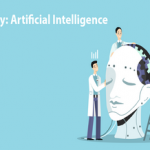Platform – A computing platform includes a hardware architecture and a software framework (including application frameworks), where the combination allows software, particularly application software, to run. Typical platforms include a computer architecture, operating system, programming languages, related user interface and tools. For example, Android, the most common mobile platform, is Google’s open and free software stack that includes an operating system, middleware and key applications for mobile devices, including smartphones. A key feature of platforms is their ability to incorporate hardware characteristics and support tools.
Cross-platform – An attribute conferred to computer software or computing methods and concepts that are implemented and inter-operate on multiple computer platforms. Cross-platform software may be divided into two types; one requires individual building or compilation for each platform that it supports, and the other one can be directly run on any platform without special preparation. In mobile, for example, many test teams struggle with cross platform automation, meaning trying to use the same automation tool or scripts on iOS, Android and/or Win Mobile.
iOS – A mobile operating system developed and distributed by Apple Inc. The user interface of iOS is based on the concept of direct manipulation, using multi-touch gestures. iOS is derived from OS X, with which it shares the Darwin foundation, and is therefore a Unix operating system. iOS is Apple’s mobile version of the OS X operating system used on Apple computers.
Android – A Linux-based operating system designed primarily for touchscreen mobile devices such as smartphones and tablet computers. It is currently developed by Google in conjunction with the Open Handset Alliance. Android has a large community of developers writing applications (“apps”) that extend the functionality of devices, written primarily in a customized version of Java. They are available for download through Google Play or third-party sites.
Windows Mobile 8 – Windows 8 introduces significant changes to the operating system’s platform, primarily focused towards improving its user experience on mobile devices such as tablets to rival other mobile operating systems like Android and iOS. Windows 8 also features a new app platform with an emphasis on touchscreen input, and the new Windows Store to obtain and/or purchase applications to run on the operating system.
Symbian – Symbian is an open-source platform developed by Symbian Foundation in 2009, as the successor of the original Symbian OS. Symbian was the most popular smartphone OS until the end of 2010, when it was overtaken by Android.
Application – Application software, also known as an application or an app, is computer software designed to help the user to perform specific tasks. Some applications are designed to run on smartphones, tablet computers and other mobile devices. These mobile apps are available through application distribution platforms, which are typically operated by the owner of the mobile operating system, such as the Apple App Store, Google Play, Windows Phone Store and BlackBerry App World.
Native application – An application designed to run in the computer environment it is being run in. The term is used to refer to a locally installed application in contrast to various other software architectures. In iOS for mobile devices, native apps include mail, maps and safari. A native app may be contrasted with an emulated application written for a different platform and converted in real time to run.
Mobile Optimized Website – Websites that are built to live on the mobile web; miniaturized websites are not. A mobile-optimized site is a condensed, highly-functional, and elegant accompaniment to the main web presence.
Mini browser – A web browser designed primarily for mobile phones, smartphones and personal digital assistants. Until version 4 it used the Java ME platform, requiring the mobile device to run Java ME applications. From version 5 it is also available as a native application for Android, bada, iOS, Symbian OS, and Windows Mobile.
HTML5 – A markup language for structuring and presenting content for the World Wide Web and a core technology of the Internet. The focus of HTML5 is improving multimedia applications and redesigning the web for a much broader range of devices, particularly mobile devices. While some companies have started to use the language, it’s still in its infancy and will not be standard until 2020. Facebook spent 2 years developing a mobile app in HTML5 which CEO, Mark Zuckerberg stated was, “probably the biggest strategic mistake we made.”
Simulator – A computer simulation, computer model, or computational model is a computer program, run on a single computer, or network of computers, that attempts to simulate an abstract model of a particular system.
Emulator – In computing, an emulator is hardware or software or both that duplicates (or emulates) the functions of a first computer system (the guest) in a different second computer system (the host), so that the emulated behavior closely resembles the behavior of the real system.
4G – The fourth generation of mobile phone mobile communications standards. A 4G system provides mobile ultra-broadband Internet access, for example to laptops with USB wireless modems, to smartphones, and to other mobile devices. Conceivable applications include amended mobile web access, IP telephony, gaming services, high-definition mobile TV, video conferencing and 3D television.
Sources: Wikipedia, PC Magazine, eWeek



















